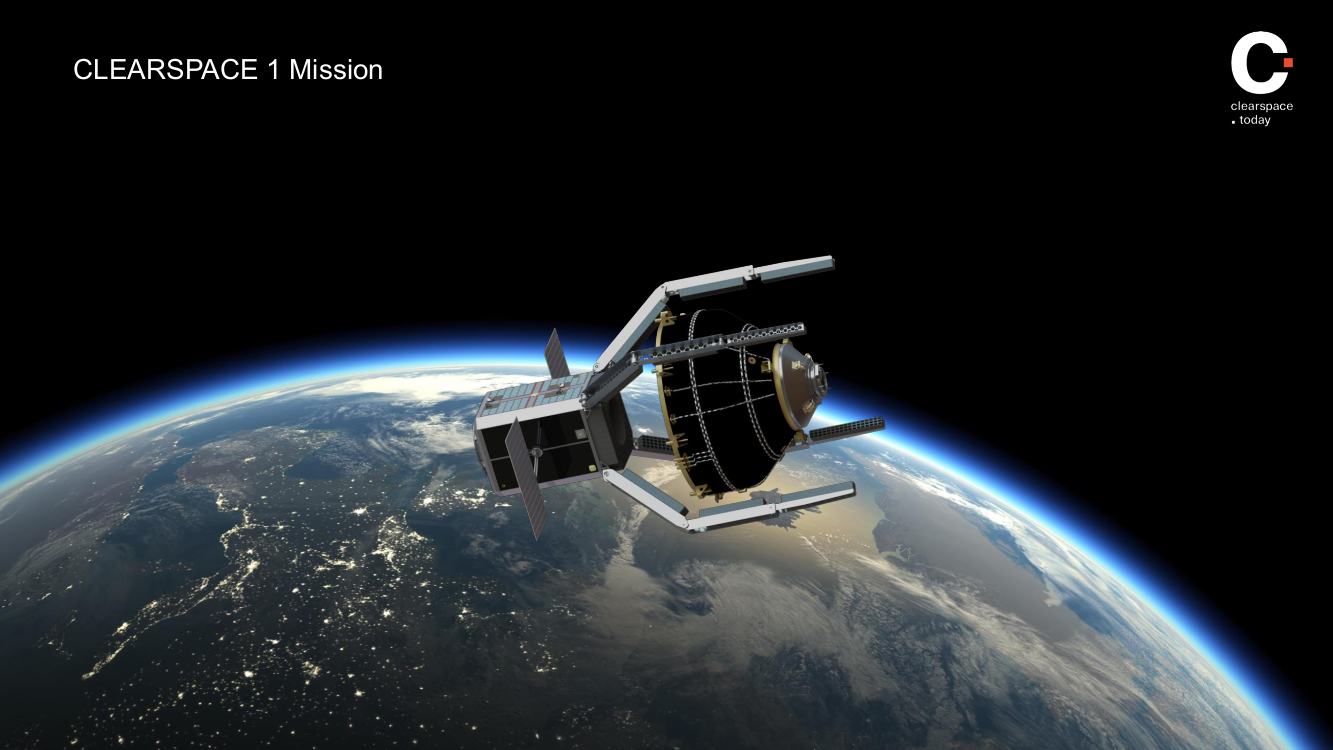Resurrecting Satellites From The Graveyard Orbit To Reduce Space Debris
24th Nov 2022
Imagine spending millions of dollars on a satellite, spending even more to launch it into space, and then after a few years of use, it becomes obsolete after running out of fuel or running out of power – despite still being fully functional otherwise. This isn’t an imaginary situation for many satellite operators who have launched satellites into geostationary orbit. Consequently, the graveyard of viable spacecraft is growing, and this contributes to the rampant increase of space debris.
One solution to combating the challenge of space debris is rising: extending the mission life of fuel-empty GEO satellites. While this solution doesn’t reduce the amount of infrastructure in space, it ensures satellites are utilised to their limits, money is well spent, and there is nothing orbiting Earth that doesn’t have a purpose. Companies have started proposing the technology, with some having already demonstrated it, and demand for the service seems to be generating traction with companies set on operating sustainably from the beginning.
The space debris issue
Space debris is a topic widely discussed in the modern era of the space industry. It isn’t a new concept and has become the top priority for spacefaring nations for quite some time. Removing defunct or dead satellites from orbit, establishing an end-of-mission plan, or even companies solely setting up to clean orbit are some of the solutions the industry has sought.
With the emergence of private sector supremacy in space comes a busy orbit, especially in Low Earth Orbits (LEOs). There are over 900,000 pieces of orbiting space debris, and many come from satellites launched many years ago without having enough fuel to return to Earth. Many nations are now seeing the repercussions of this increasing number and have established a benchmark of sustainability to drive the future of space operations.
Pioneering companies offering mission extension services
While many companies have proposed in-orbit services such as life extension for satellites, two are most noteworthy: Northrop Grumman’s subsidiary Space Logistics, and Effective Space Solutions (now part of Astroscale). While Astroscale’s satellite extension services are still in the works, Northrop Grumman is already demonstrating the technology. In April 2020 Northrop Grumman pioneered spacecraft life-extension services for Intelsat, a US telecommunications company, by docking its Mission Extension Vehicle-1 (MEV-1) to one of its satellites. The company completed another life extension service in April 2021. The vehicle is a robotic servicing spacecraft that docks with satellites and re-positions them to a new designated geostationary orbit for continual use. The mission is expected to extend the satellite’s life by five years. Before MEV-1, the only spacecraft servicing occurred with humans working on manned objects and the Hubble Space Telescope.
Israel-based company Effective Space Logistics, which entered into the GEO life extension market in 2016, was purchased by Astroscale in 2020. Astroscale, based in Tokyo, is a leading company in space sustainability and has since shifted focus on developing Life Extension services, also dubbed LEX. LEX will use four robotic arms to position electric thrusters for re-positioning the satellite and will provide altitude control. LEX will also stabilise or reduce the orbital inclination of satellites and relocate satellites to new orbital slots. Astroscale, however, is yet to demonstrate the capability.
While Northrop Grumman, a space giant, has been the only company to successfully provide this service, a 2018-born startup recently signed a deal with Intelsat to deliver life extension to a satellite. Switzerland-based ClearSpace, a company also focused on cleaning up orbit, announced in November a collaboration with Intelsat to extend the life of one of its satellites set to approach the end of its time soon. The United States telecommunications company is the only one in the world to commission life extension services for its satellites currently, in a bid to reduce waste in orbit and to make the most of spacecraft that cost millions to build and launch.
ClearSpace is a veteran in the deorbiting market already. In 2019, the European Space Agency selected ClearSpace to design equipment that would capture and deorbit a piece of space debris from a Vega rocket that was left in orbit in 2013 after its mission. The mission, ClearSpace-1, is scheduled to take place in 2025 and will use a robotic arm to capture the rocket.
Most recently, the announcement of the collaboration with Intelsat comes off the back of the feasibility study ClearSpace conducted last year to remove two UK-registered objects from low Earth orbit in October 2021. The company completed the study in March this year, and in September was awarded a £2.2 million contract from the UK Space Agency to move onto the next phase of the mission, called the Clearing of the LEO Environment with Active Removal (CLEAR). According to the company, the design phase is slated to last until October 2023.
Why could life extension services be beneficial?
Extending the life of satellites presents boundless opportunities for companies, such as saving on costs, and infrastructure, and could likely be more energy efficient overall. Satellite Evolution Group, a space news, and analysis company asserted in 2018 in a New Space magazine feature that satellite extension services are essential for the next generation of the industry. “Satellite lifetimes are largely dependent upon how much fuel they have onboard. In what could be described as a massive waste of technological capabilities and money, many satellites are retired fully functional, simply because they’ve run out of fuel,” the company stated.
Commenting at the time ahead of the first MEV service, Intelsat’s former CEO Stephen Spengler said that the “ability to add five or more years on any particular satellite” would provide an enormous amount of fleet flexibility” and boost the economic value of its spacecraft.
ClearSpace’s Chief Strategy Officer, Tim Maclay, believes this service could have “tremendous” benefits to the industry and could start an era where the maintenance of satellites beyond their initial lifespan becomes normal. “There is a need for ancillary services, for support services, and we’re really now starting to see in space, [there is a] transition from a ‘build it once and throw it away’ kind of industry to one where operators are really trying to optimise the utility of their assets”, Maclay told Orbital Today.
While there are plenty of other in-orbit services that could contribute to reducing waste, ClearSpace said they have had the most interest in life extension services from customers. But would ClearSpace be different from Northrop? He said the company is concentrating on providing a low-cost service that can be refueled and reused, with the goal of serving multiple clients with a single spacecraft. Maclay said while other companies will look to bigger satellites, ClearSpace will initially service medium-sized spacecraft. However, he did not detail what the service would look like.
Why GEO, not LEO?
While most satellite operators and launch companies are focused on LEO, geostationary satellites are the focus of extension services. At almost 36,000 kilometers altitude, geostationary satellites orbit above the equator from west to east in the same rotation of Earth, making the spacecraft look ‘stationary’, ESA explains.
However, geostationary satellites are some of the biggest culprits for space debris. When retired, they shift about 300 kilometers above geostationary altitude in a graveyard orbit. This is different to LEO satellites, which are expected to lower their altitudes to re-enter the Earth’s atmosphere and have a fiery death within 25 years. Therefore, life extension missions on GEO satellites are crucial to avoid spacecraft orbiting without purpose and adding to the junk in space.
Maclay said that for GEO satellites, fuel is often the “life limiter” due to them usually having longer lives, of about 15 years, as opposed to LEO satellites set for up to ten. “We’re focused on services that really provide value for the customers,” Maclay said. “These folks have sunk at times, multiple hundreds of millions of dollars into the development, launch, and operation of their assets, and they’re typically designed for 15 years. If you can extend the life of that asset, you delay the need to procure new satellites, you’ve provided continuity of your services to your customers, and you’re really maximising the return on the existing satellite”.
Maclay said LEO satellites have less riding on them, whether that be money, time, or mission profile. But GEO satellites are often applied to government agencies with larger mission expectations or telecommunications that humans rely on every day.
Challenges to come
There are many operational challenges when developing new, ground-breaking technology, especially in space. Maclay says creating something that hasn’t been done before – or very rarely – is hard, such as perfectly being able to rendezvous a spacecraft with a satellite remotely at a very high speed. He also said cost is a large challenge ClearSpace has already faced amid the emerging technology. “New technology is expensive, and so at the beginning of this industry you’re going to see, much like in any other industry, the first products, and the first services are going to be expensive,” Maclay said. “Then as the adoption rate increases, and as the technical development is retired, you’ll see prices come down and you’ll see more of a commoditized kind of ecosystem.”
Lastly, ClearSpace says that the regulatory environment of developing new space missions is a hurdle to overcome. “Those national licensing frameworks are just beginning to consider these types of applications… We’re seeing great support across the board, but it’s going to take a little while to feel our way through the regulatory and legal frameworks that exist, both nationally and internationally,” Maclay said.
Life extension services for satellites so far often mean either refueling the satellite or deploying a pod that docks with the spacecraft to give it a boost and maneuver it back to the correct orbital plane, after shifting into a graveyard orbit. From 2011 to 2013, NASA demonstrated this with its Robotic Refueling Mission. For a seemingly simple task of refueling, there are many challenges associated with it. NASA described the tricky undertaking:
“First, the fuel valves of the satellites in space today were never designed to be accessed after launch. To prevent hazardous fuel from escaping during launch and operations, satellite manufacturers tightly lock down the fuel valve with wired-shut caps. These caps must be removed before anyone can access the valve. Then, pumping fluid in the microgravity environment of space is a completely different matter than transferring fluid on the ground. Without gravity to settle the fluid in the bottom of a tank, like on Earth, tank plumbing and pumps must be more specialised to correctly operate in the microgravity environment of space.”
The RRM, along with Canada’s robotic arm on the International Space Station, successfully completed the robotic refueling but recognized there are many challenges to face before the technology enters the market. However, following a cryocooling failure in April 2019, remaining tests were halted, and further efforts are under wraps.
Space Tugs
While ClearSpace hasn’t provided many details about its plans to extend the life of an Intelsat satellite, previous designs show a glimpse of the type of technology that could be developed. Thrusters are required to maintain a satellite’s orbital position, but inevitably, when fuel runs out, it’s game over for the spacecraft. While refueling efforts could be a possibility, as NASA forewarned, fuel valves were not designed to be reopened and closed after launching. However, space tugs are possibly an appealing alternative. A space tug is a spacecraft that docks with a satellite and takes over its station-keeping duties and transports it to another orbit. A reusable space tug was developed by NASA in the late 60s and early 70s. Most recently, Italian company D-Orbit launched its InOrbit NOW service, which deploys CubeSats into precise orbital slots.
Other companies such as UK-based Skyrora have recently announced work being done to develop and build a space tug for the purpose of providing in-space services.
According to an analysis released by telecommunications, media, and technology consulting firm Analysys Mason in 2016, while space tugs have typically been used at the beginning of a satellite’s life, they could also be an option for life extension. The analysis claimed the solution is attractive because the tug could assist with station-keeping and altitude control. While no fuel is transferred in the process, consequently, a tug may be less energy efficient because “a tanker can detach once re-fuelling is complete, but a tug must station-keep its own mass as well as that of the satellite for the duration of its mission”. However, Analysys Mason said more energy-efficient thrusters in tug designs would solve that problem.
While life extension services could be a vital tool for reducing space debris and maximising existing satellites, much of the technology is yet to be proven. However, it is clear the capability could be a game-changer for the future of the space industry.
Orbital Today has reached out for a comment from Intelsat.







Thank you for your comment! It will be visible on the site after moderation.